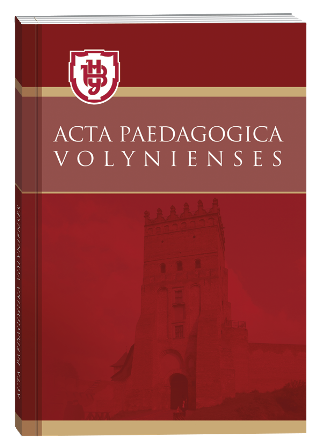THE INFLUENCE OF CARTOONS ON THE PERSONALITY DEVELOPMENT OF A PRESCHOOL CHILD
DOI:
https://doi.org/10.32782/apv/2022.4.8Keywords:
cartoon, children of preschool age, worldview formation, preschool education institutionsAbstract
The article substantiates the influence of cartoons as one of the most significant mechanisms of children’s socialization, which influence the worldview of preschoolers and the formation of their system of value orientations, which form stereotypes of behavior and ways of solving situations, give the child an idea of friendship, mutual help, and mutual understanding. The possibility of cartoons in solving the following educational tasks was revealed, such as: formation of a worldview; moral education; aesthetic education; labor education. A number of positive and negative aspects of watching cartoons have been identified: cartoon characters show the child different ways of interacting with the world; through comparison with favorite heroes, the child learns to perceive himself positively, to overcome his fears and difficulties, to develop respect for others; children imagine pictures of the world much more effectively, and thus begin to develop their personality, adopting certain qualities of the characters; the child perceives almost all information as an image, including then his model of the world is built. Several signs of a «harmful cartoon» are substantiated: the main characters of the cartoon are aggressive, they seek to harm others (the result of watching such a cartoon can be a manifestation of cruelty, ruthlessness, aggression by a child in real life); the deviant behavior of the cartoon characters is not punished by anyone (the result of viewing may be the shaking of standards of good and bad behavior, acceptable and unacceptable behavior); forms of behavior that are dangerous for the child’s life are demonstrated, which in real life are simply dangerous (the consequences of watching such role models can result in a child’s lowering of the threshold of sensitivity to danger, therefore, potential injuries); forms of non-standard sex-role behavior are broadcast (watching such scenes may make you want to try the demonstrated behavior on yourself); disrespectful attitude towards people, animals, plants; unsympathetic, ugly characters are used. In order to study some aspects of the inclusion of animated films in the content of educational and educational activities with preschool children, a survey of educators and parents was conducted.
References
Білоус О. Діти – найвимогливіша й найбеззахисніша телевізійна аудиторія. Телевізійна журналістика. Львів, 2000. № 6. С. 72–88.
Вакуленко О. Засоби масової інформації як особливий чинник впливу на формування способу життя особистості. Соціальний працівник. 2005. № 9. С. 14–18.
Демченко С. В. Медіаполітична система в сучасній Україні : автореф. дис. на здобуття наук. ступеня, канд. пол. наук : спец. 23.00.02. «Політичні інститути та процеси». Дніпропетровськ, 2004. 22 с.
Дорошевіч О. А. Критичне ставлення дитини до медіа насильства як складова її медіакультури. Вісник психології та педагогіки. 2012. № 9. С. 31–46.
Кепканова О. І. Вплив медіа-середовища на формування дитини. Психолог. 2008. № 5. С. 67–70.
Масол Л. Формування естетичного смаку засобами телебачення і радіо. Шкільний світ. 2003. № 38. С. 34–41.







